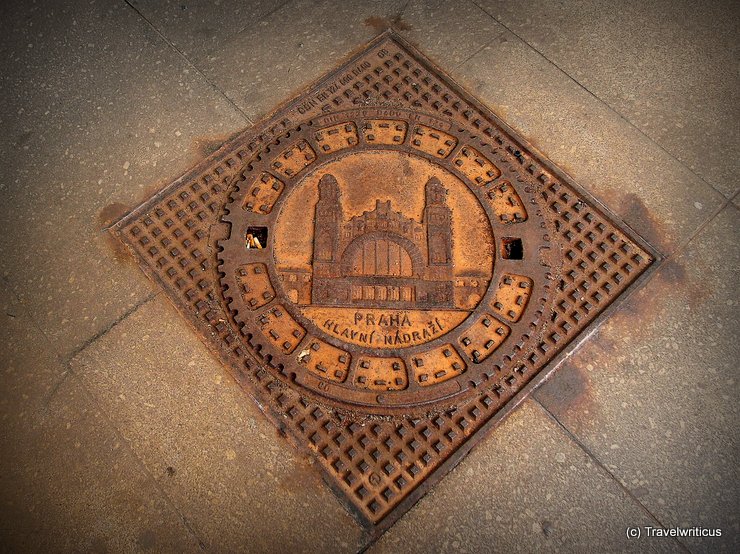
This manhole cover on a platform of Prague Central Station (Praha hlavní nádraží) displays the historic station building. Today, the entrance hall of this building, created by Josef Fanta, forms a hidden gem for friends of Art Nouveau. [German]
You only see what you know (Goethe)

This manhole cover on a platform of Prague Central Station (Praha hlavní nádraží) displays the historic station building. Today, the entrance hall of this building, created by Josef Fanta, forms a hidden gem for friends of Art Nouveau. [German]
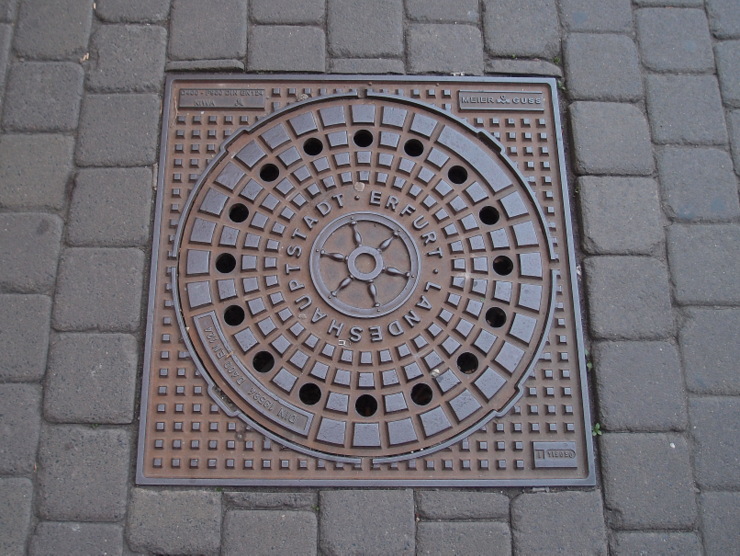
The manhole covers in Erfurt show the local city arms. The wheel in this coat of arms originates from the Wheel of Mainz (Mainzer Rad). In this way, the symbol refers to the period when Erfurt formed a part of the Electorate of Mainz. [German]
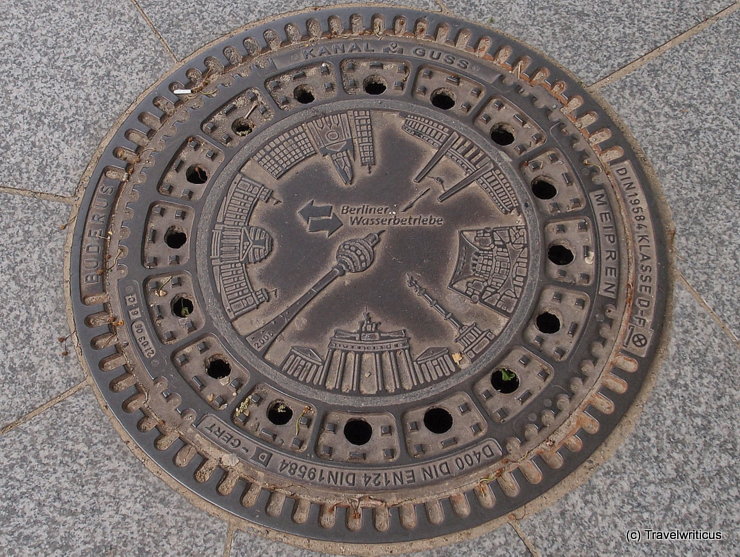
This manhole cover in Berlin displays a compilation of the main sights in the German capital. I’m surprised that the new Federal Chancellery Building (2001) is a member of this group of Berlin attractions. [German]
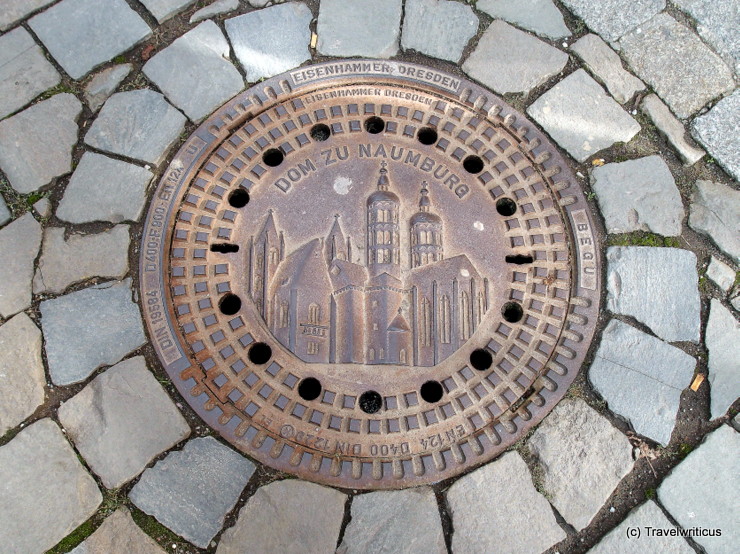
This manhole cover displays the cathedral of Naumburg (Saale). The German full name is Naumburger Dom St. Peter und St. Paul. The cathedral dates back to the 13th century and is part of the Romanesque Road (Straße der Romanik) in Saxony-Anhalt.
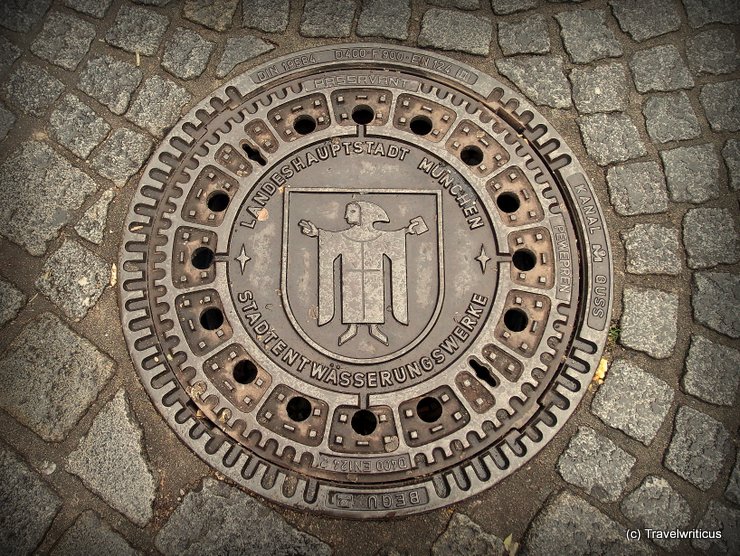
The manhole covers in Munich display the “Münchner Kindl”. It is a character you also see in the city arms. Though in the Bavarian dialect, Münchner Kindl literally means Munich child, the original meaning of the figure was a monk or friar.
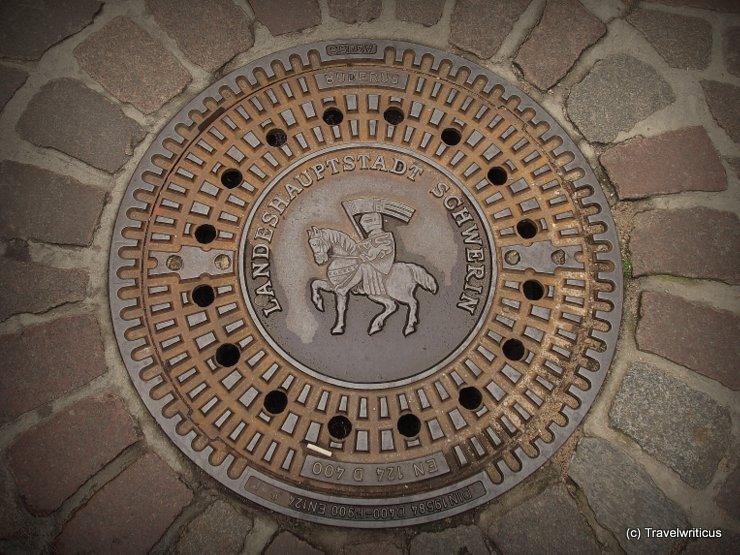
Schwerin is the capital city (Landeshauptstadt) of the German state of Mecklenburg-Vorpommern. The manhole covers in Schwerin show the city arms in the version of 1991. The depicted knight represents Henry the Lion. The flag in his hand is a gonfalon. [German]
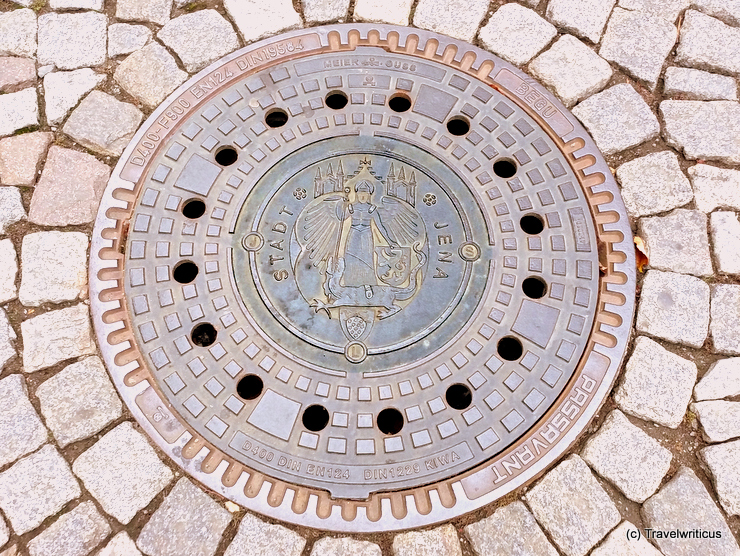
The manhole covers of Jena display the city arms. In the middle, archangel Michael pushes a lance into a dragon’s mouth. The upright black lion refers to the Margraves of Meissen. Noteworthy is the bunch of grapes below the dragon. [German]
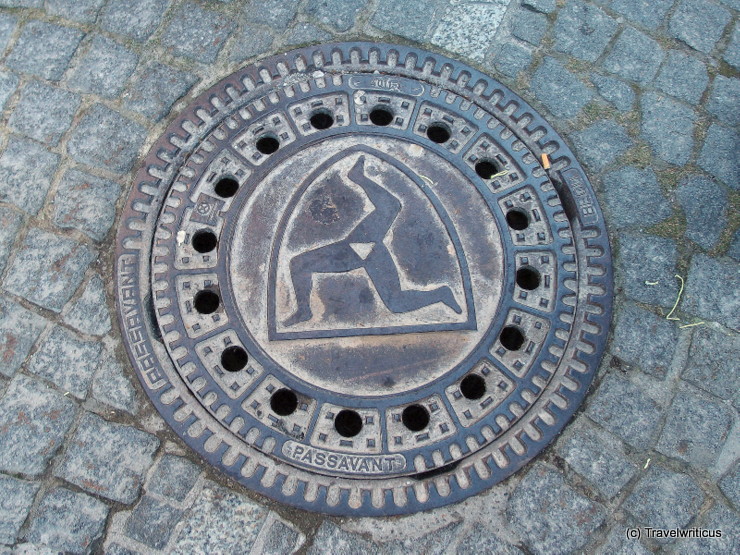
On the manhole covers in Füssen, you see the local city arms showing three legs. This is a fine example of canting arms. The German word for feet is “Füsse”. But why sounds this Bavarian town name like a body part?
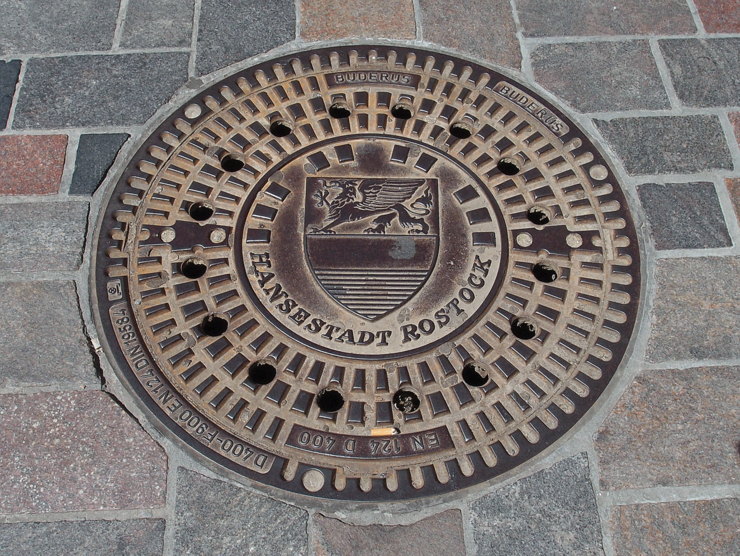
The manhole covers in Rostock display the city arms. The coat of arms dating back to 1367 depicts a golden gryphon of a blue field (representing the former princes of Rostock). Bars of silver and red represent the colours of the Hanseatic League. As a member of the Hanseatic League, the city is named Hansestadt Rostock. [German]
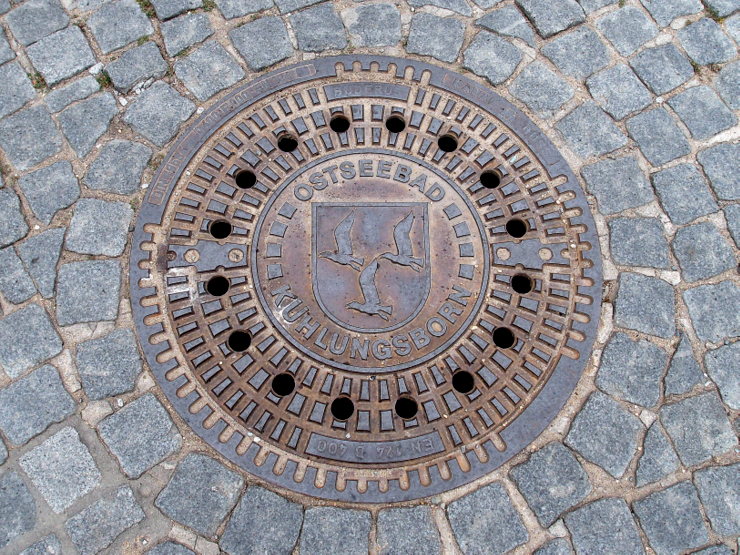
The manhole covers in Kühlungsborn show the city arms. The coat of arms displays three silver seagulls in a blue field. The title Ostseebad refers to the fact that Kühlungsborn is a seaside resort on the Baltic Sea (Ostsee).
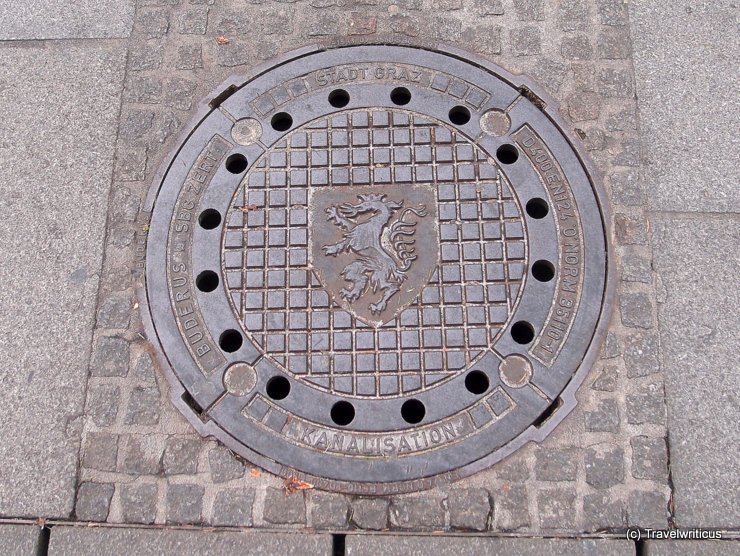
The manhole covers in Graz show the city arms. It is a Panther with flames from all body openings. The depiction is similar to the Styrian coat of arms. However, the modern Styrian Panther has horns and only one flame from his mouth. [German]
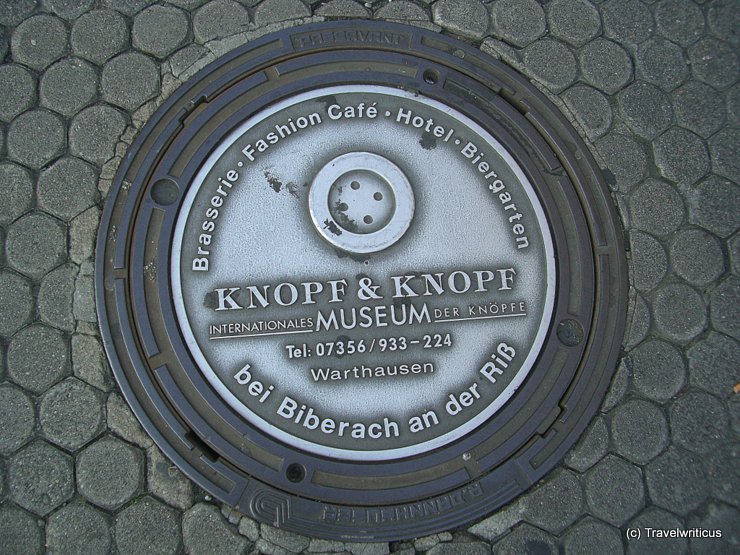
An Museum of Buttons (Knopf & Knopf Museum) advertises on this manhole cover in Mannheim. Together with a brasserie and a hotel, it fills a former railway station building in Warthausen. The building is located directly on the Öchsle Heritage Railway. [German]